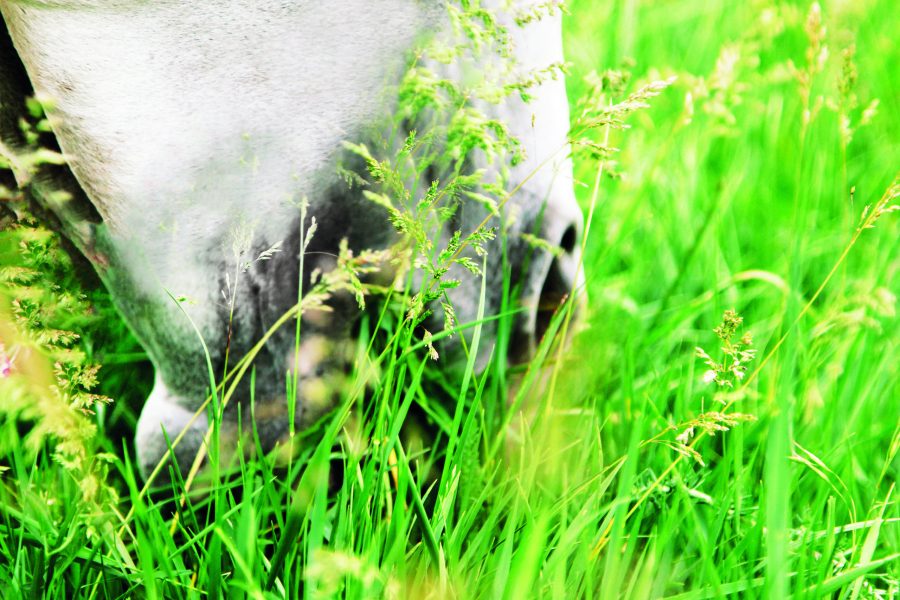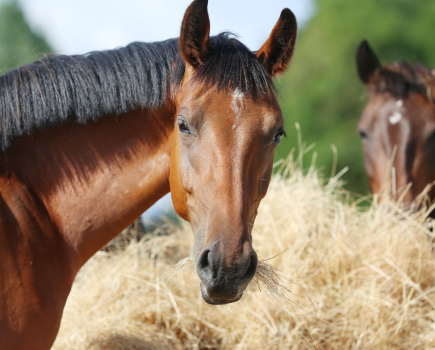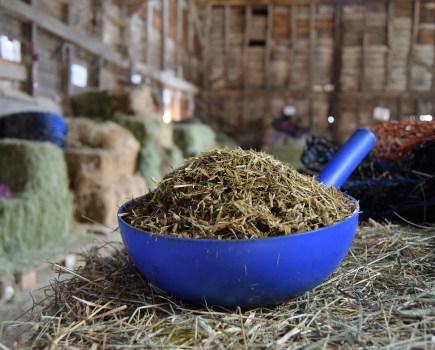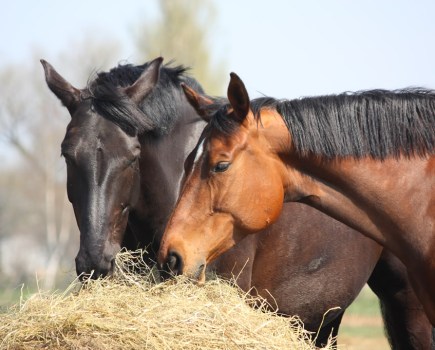There is sugar in grass — and what horse or pony doesn’t love being turned out in a field full of long, luscious green grass? However, consuming an excess of sugar in the diet via this grass can cause obesity, illness and worse in equines. For horses, sugar exists in various forms in almost everything they eat — grass, hay and hard (compound) feeds. Plants themselves make sugars by a process called photosynthesis, which they use to produce fibre and grow.
The sugar content of grass has received a great deal of coverage in recent years, particularly in relation to equine obesity and laminitis. It has been known for some time that the sugar level in grass varies throughout the day depending on the amount of sunshine. Where there is more sunlight, photosynthesis increases and more sugar is produced, whereas on a cloudier day there will be less sugar in the grass. However, temperature, moisture levels, time of day, stage of growth and the type of grass all play a role too, so it’s not as simple as you might hope.
Similarly, for hay and haylage, the time of year that the cut was made play a significant role in the resulting sugar levels, but these can also vary across the same field, making batch testing difficult.
Just like us, horses need sugar to fuel their muscles and organs, including the brain. They evolved to graze rough tundra grass and scrublands which would have consisted of low-sugar plants, and they would have consumed this energy source steadily over the course of the day. As such, their bodies never needed to cope with high levels of sugar and they therefore don’t have the capacity to do so.
In the UK, for example, we have much richer pastures where the sugar content can exceed what the horse’s body can cope with. If a horse is working hard they will probably require more sugar in their diet to provide energy, but this needs to be fed in a controlled manner. Conversely, a horse doing low-level or no work can find the pastures in the UK too high in sugar to be fed in an uncontrolled manner.
Sugar in grass: insulin dysregulation
Horses have evolved to live on grass, which provides sugar as its primary fuel and fibre that is essential for gut health. Horses are well adapted to digesting and using this source of sugar and a healthy animal receiving sufficient exercise with a good body condition score (3/5) should cope with the sugar they receive from their grazing and roughage.
However, the majority of horses and ponies do need their sugar intake to be restricted, usually because they are overweight or obese, not doing enough exercise to utilise the energy they are receiving from the grass, and/ or have been diagnosed with a health condition, such as equine metabolic syndrome or laminitis.
When a horse receives too much sugar in their diet, the sugar will be stored in their liver and muscles as glycogen with the help of the hormone insulin. If a horse is overweight their fat cells are constantly producing biochemicals that disrupt the insulin system, resulting in what’s known as ‘insulin dysregulation’.
With the insulin system not working properly, the horse is unable to cope with high sugar levels and especially sudden spikes of sugar in their bloodstream. These episodes of high blood sugar cause damage to their body, most notably in the laminar tissue of the feet, resulting in laminitis.
Ways to reduce a horse’s intake of sugar in grass
In instances where the horse, pony or donkey needs their sugar intake reduced for weight loss purposes and to reduce the risk of pasture-induced laminitis, the following methods will be helpful:
1. Use grazing muzzles
Grazing muzzles can be used to reduce the intake of grass. They are best left on whenever your horse is at grass as without a muzzle horses (and especially some ponies) can consume vast quantities of grass in a short space of time.
2. Turn your horse out overnight
Turning your horse out at night can help because the sugar in grass is at a lower level during this time, provided the temperature remains above 5°C. Below this temperature the grass won’t have used up its stored sugar for growth and so levels could remain high.
3. Avoid frosty mornings
Avoid turning out when it’s been cold and sunny (i.e. sunny, frosty mornings) as this is when sugar levels are highest.
4. Don’t use stressed or over-grazed land
Fields that have been stressed by drought or over-grazing tend to grow more weeds and hardier grass species that have a higher sugar content and so should be avoided.
5. Select the right species of grass
Mixed species meadows are likely to be lower in sugars than those with higher proportions of ryegrass. Ryegrass tends to be the highest in sugar during late spring and early autumn. Mixed species have similar but less marked and more gradual variations in sugar.
6. Be aware of the environment
Warm temperatures, ample moisture, good soil fertility and sunlight all result in fast growth that uses up the sugars in grass and reduces the levels consumed by your horse.
7. Carefully consider fertilising
Appropriate use of fertilisers will maintain a steady growth of grass that is lower in sugars. This may mean that paddocks will need rotating and topping. Co-grazing with ruminants (cattle or sheep, for example) can be helpful.
8. Fence off shaded spots
Shaded areas receive less sunlight and so undergo less photosynthesis, resulting in lower levels of sugar in grass. It might therefore help to section off shaded areas for at-risk equines.
9. Create an all-weather turnout area
Creating an all-weather turnout area enables your horse to have some turnout when grass conditions aren’t ideal, especially for laminitics or those suffering with equine metabolic syndrome.
10. Soak hay
Soaking hay for at least six hours in cold water (or one hour in warm water) can reduce its sugar content by around 50%. However, this varies widely with the type and batch of hay.
11. Select low-calorie hard feeds
It’s important to feed a low-calorie, protein, vitamin and mineral balancer alongside any forage-restricted diet to ensure your horse is getting what they need.
12. Test your forage
Some feed manufacturers offer a service that tests your hay and haylage to see how much sugar it contains.
The key message here is that while grass provides sugar in your horse’s diet, dietary sugar comes from many sources that you also need to be aware of in order to control their sugar intake.
Receive six issues of Your Horse magazine for just £15!









